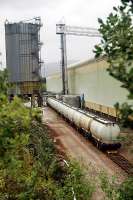Lochaber Narrow Gauge Railway
Introduction
This 3ft gauge line is closed. It was built and operated by Balfour, Beatty & Co Ltd during the construction of the Lochaber Aluminium Works in Fort William. The railway was built between 1925 and 1927. The line ran from a sea-pier at Loch Linnhe to the factory site (the lower works) and then on along the track of the pipeline (the upper works) which was constructed to being water from Loch Treig and Loch Laggan to the power station within the works. Track was second hand, having been (probably) brought from France. The line was later adopted and maintained by British Aluminium and used for maintenance of the upper and lower works. The upper portion of the railway was 19 miles long and the pipeline from Loch Treig to Fort William 15 miles long.
Dates
| / /1925 | Lochaber Narrow Gauge Railway Construction of line by Balfour, Beatty & Co Ltd begins. The line facilitates construction of the Lochaber Aluminium Works and the considerable hydro scheme powering it with a pipeline running east to Loch Treig and Loch Laggan. |
| / /1926 | Fort William Smelter The Lochaber Narrow Gauge Railway opened from the Fort William Smelter to Loch Treig. The line was opened in connection with the construction of the Aluminium works. Rather than close afterwards it was retained and improved for maintenance on the somewhat remote pipeline which served the hydro-electric scheme at the works. |
| / /1955 | West Highland Railway British Aluminium Co Ltd erects the Inverlochy Footbridge, roughly where the temporary line of the Lochaber Narrow Gauge Railway passed over the Mallaig line, in order to link housing at Inverlochy to the Aluminium Smelter. |
| / /1977 | Fort William Smelter The Lochaber Narrow Gauge Railway closed, some track remained by the works in Fort William. |
| / /1978 | Lochaber Narrow Gauge Railway
Fort William Smelter Bridge over A82 removed. |
Portions of line and locations
This line is divided into a number of portions.
Lower Works Railway
This pier was built around 1925 as an jetty for the Lochaber Aluminium Works, initially used during its construction and later, after rebuilding, for import and export of materials.
...
See also
Piers, Slips and Staiths
This disused double track bridge crosses the West Highland Railway directly west of Fort William Junction (and east of the Fort William Oil Sidings). It carried the Lower Works Railway portion of the Lochaber Narrow Gauge Railway. Only one track was laid over the bridge, what would have been the southern of the two tracks.
...
See also
West Highland Railway
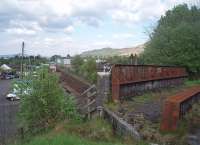
Mark Bartlett 18/05/2010
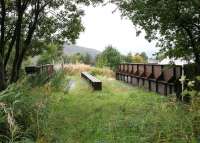
John Furnevel 30/09/2005
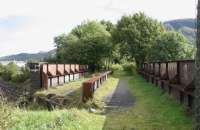
John Furnevel 30/09/2005

Ewan Crawford //
This is the only remaining aluminium smelter in the United Kingdom. This smelter was built by contractors Balfour, Beatty & Co Ltd to the east of Fort William, opening in 1929.
...
See also
West Highland Railway
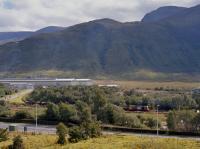
...
Bill Roberton //1986
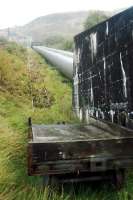
Ewan Crawford //
Upper Works Railway
This is the only remaining aluminium smelter in the United Kingdom. This smelter was built by contractors Balfour, Beatty & Co Ltd to the east of Fort William, opening in 1929.
...
See also
West Highland Railway

...
Bill Roberton //1986

Ewan Crawford //
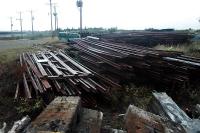
Ewan Crawford //
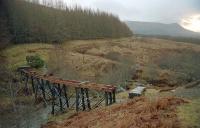
Ewan Crawford //1998
This location was approximately half way along the Lochaber Narrow Gauge Railway. It was known as Central or, sarcastically, 'Charing Cross'. There was a triangle of lines, for turning engines, a shed and Central Loop to the west.
...
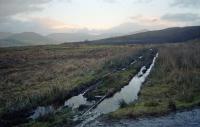
Ewan Crawford //1998
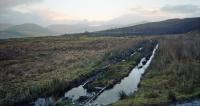
Ewan Crawford /01/2002

...
David Spaven //1970
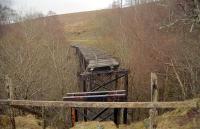
Ewan Crawford //1998
This bridge, over the Allt Beinn Chlianaig, was the highest point of the Lochaber Narrow Gauge Railway's upper works railway.
...
This is a 400ft long rock filled dam, damming the River Treig at north end of Loch Treig . It was built to convert the loch into a reservoir, providing a water supply for the hydroelectric scheme opened with the Lochaber Aluminium Works. The water level was raised by 36ft.
...
Laggan Dam Railway
Original line to factory site
This pier was built around 1925 as an jetty for the Lochaber Aluminium Works, initially used during its construction and later, after rebuilding, for import and export of materials.
...
See also
Piers, Slips and Staiths
This footbridge was erected by the British Aluminium Company to give access from the housing at Inverlochy (west) to the Lochaber Aluminium Works (east) over the Mallaig Extension (West Highland Railway).
...
See also
West Highland Railway
This was Balfour, Beatty & Co Ltd's construction camp for the Lochaber Aluminium Works, its pier, hydro scheme, penstocks, long distance water pipes and dams of Loch Treig and Loch Laggan. The construction railway, the considerable Lochaber Narrow Gauge Railway ran to the work sites and there were sidings serving the depot which came from the West Highland Railway.
...


